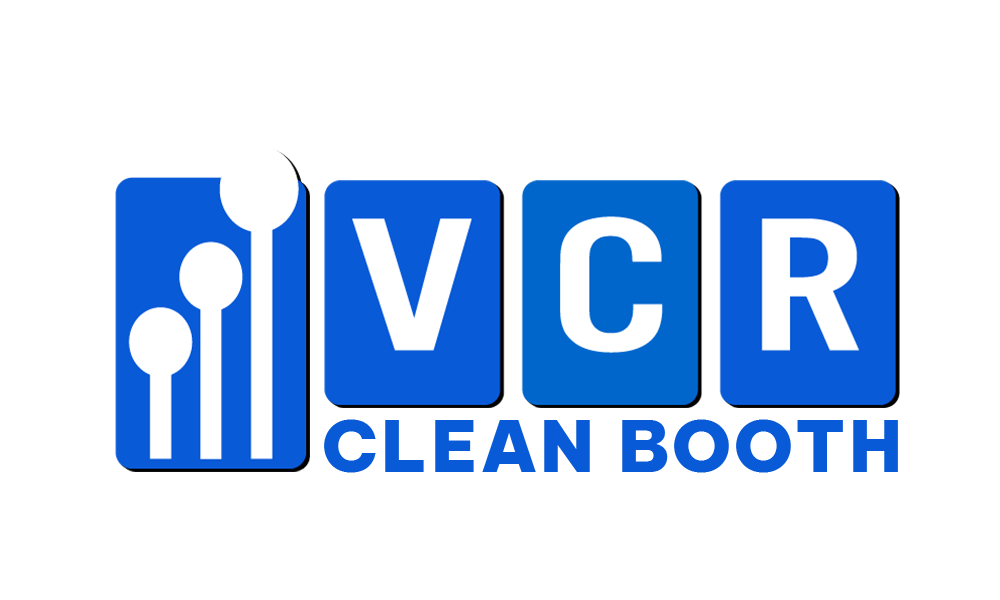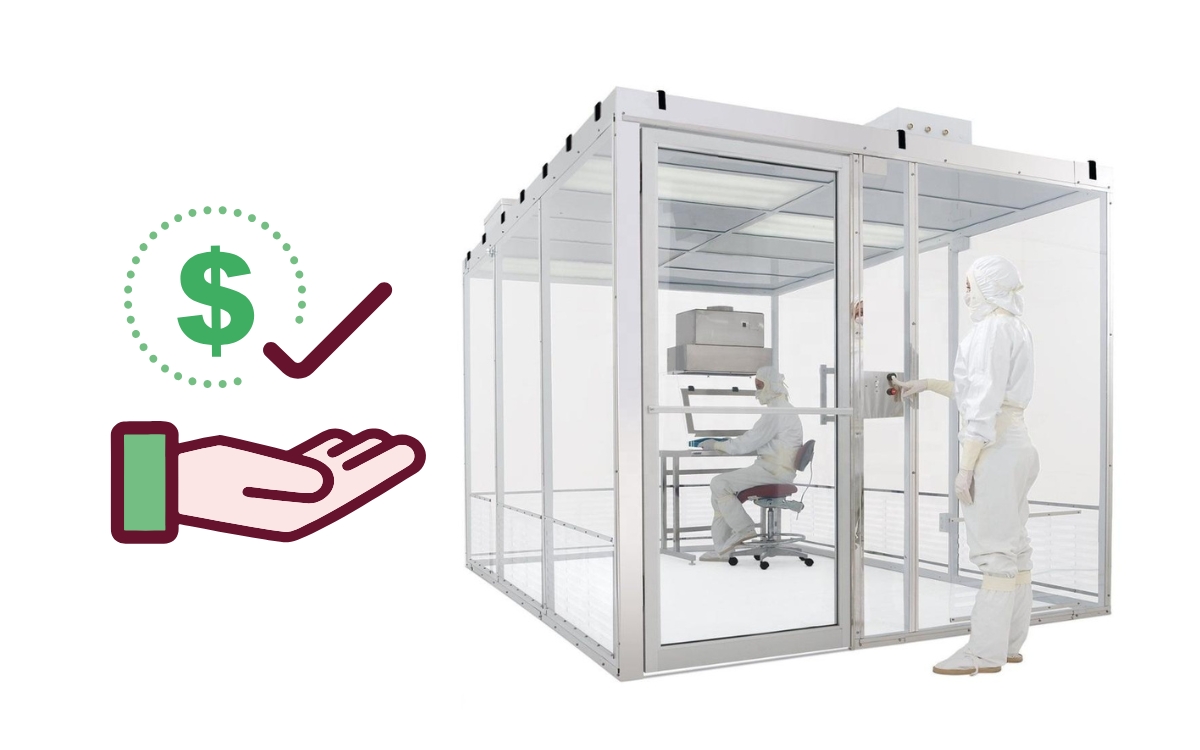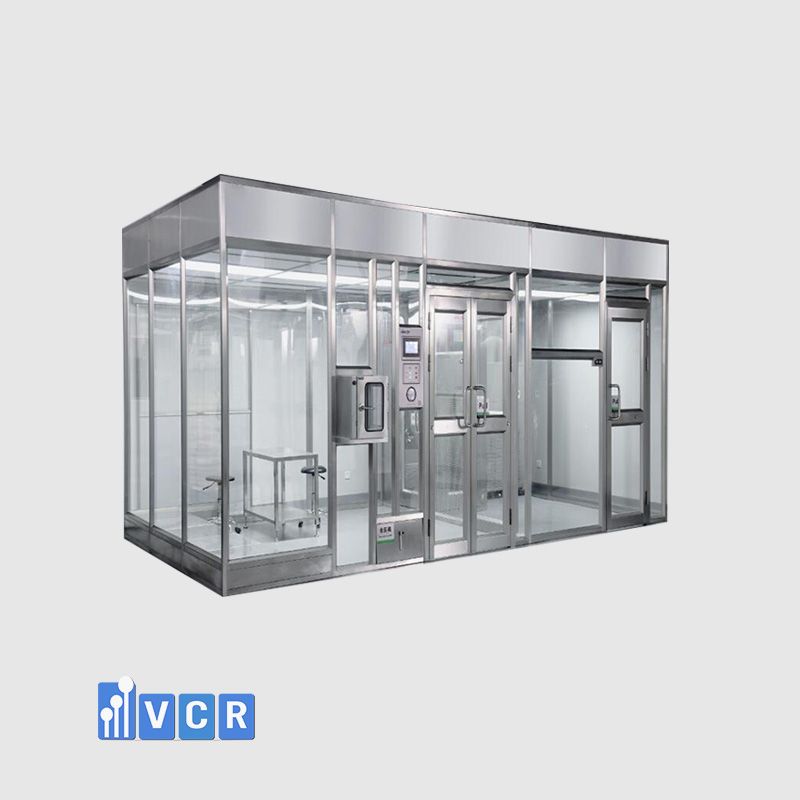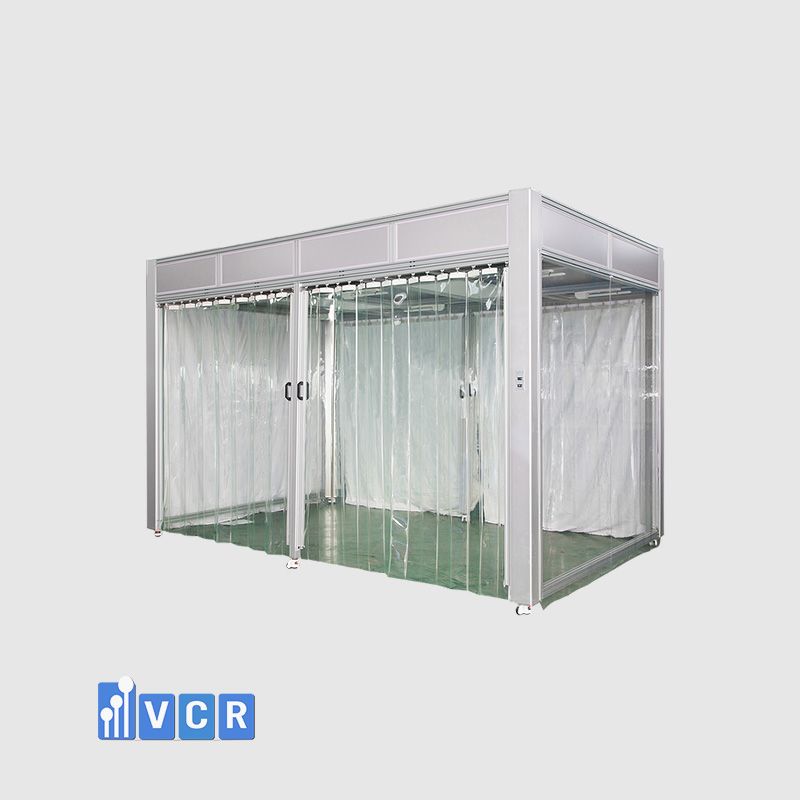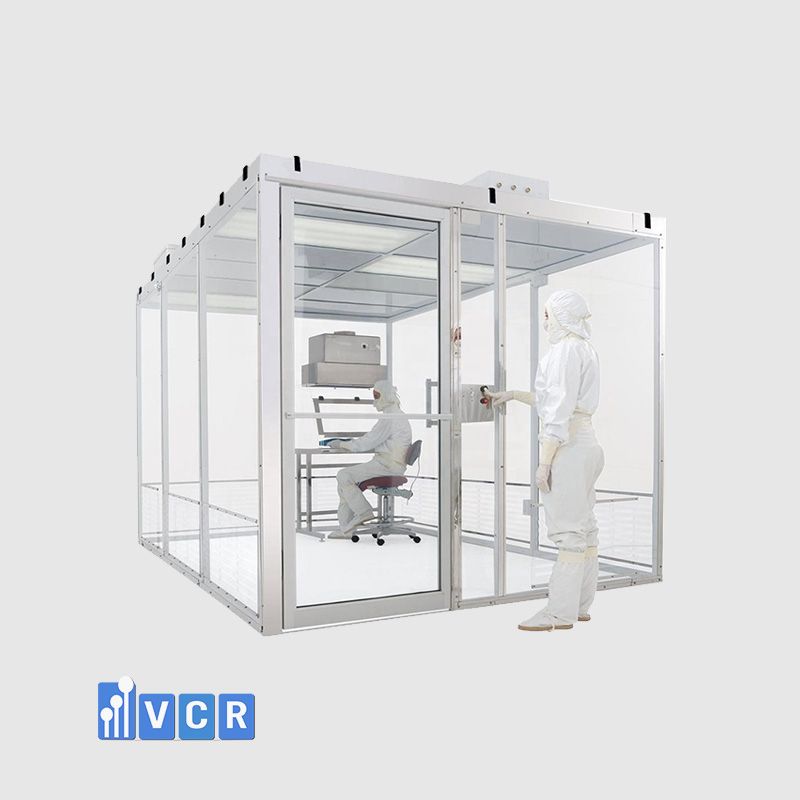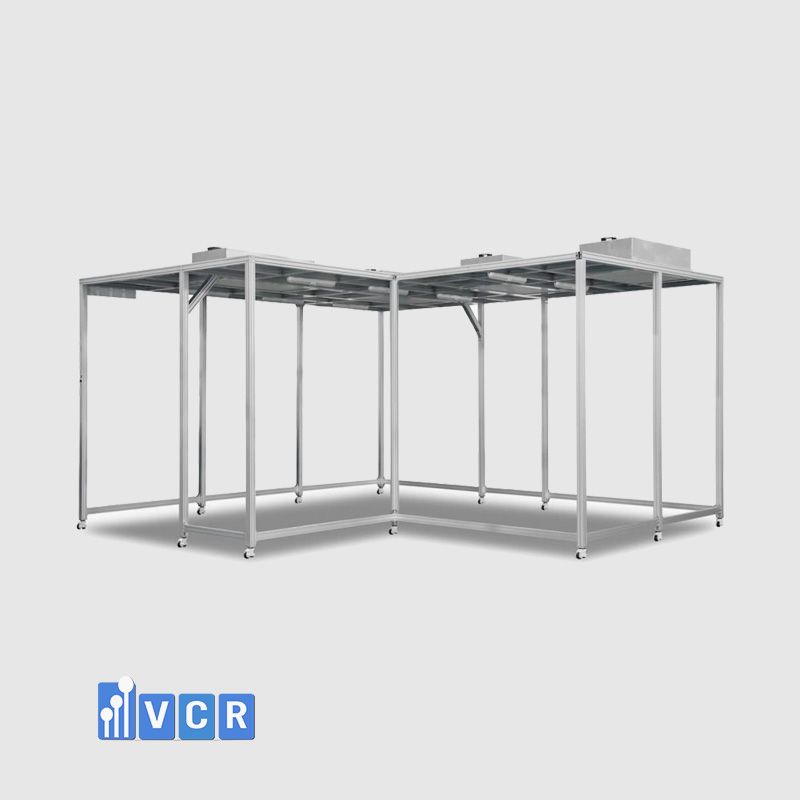Clean Booth (local clean room) is an effective solution to create a clean environment, helping to protect microchip components and ensure quality in electronics manufacturing. With a stainless steel/aluminum frame, PVC curtain, HEPA/ULPA filter system and FFU fan, this device provides the ability to control fine dust, reduce static electricity.
- 1. What is a Clean Booth and Its Role in Electronics Manufacturing?
- 2. Types & Pricing of Clean Booths for Electronics Factories (2025 Update)
- 3. Key Factors That Affect Clean Booth Pricing
- 4. Why Choose Clean Booths from VCR?
- 5. FAQ - Common Questions About Clean Booths in Electronics Manufacturing
- 6. Need an Accurate Clean Booth Quote for Your Electronics Facility?
1. What is a Clean Booth and Its Role in Electronics Manufacturing?
A Clean Booth (also known as a localized cleanroom) is a compact, self-contained clean environment designed to maintain a stable cleanliness level within a general production area. It operates using FFU (Fan Filter Units) combined with HEPA or ULPA filters to remove microscopic particles from the air, then circulates clean air either vertically or horizontally within the enclosed space.
Basic Structure of a Clean Booth:
- Frame: Typically constructed from 304 stainless steel or aluminum profiles.
- Enclosure: Made of soft PVC curtains or rigid polycarbonate/mica panels.
- Filtration System: Includes pre-filters, intermediate filters, and HEPA/ULPA filters.
- FFU Units: Ensure stable airflow and maintain differential pressure.
- Lighting & Controls: Integrated LED panels and optional digital control systems.
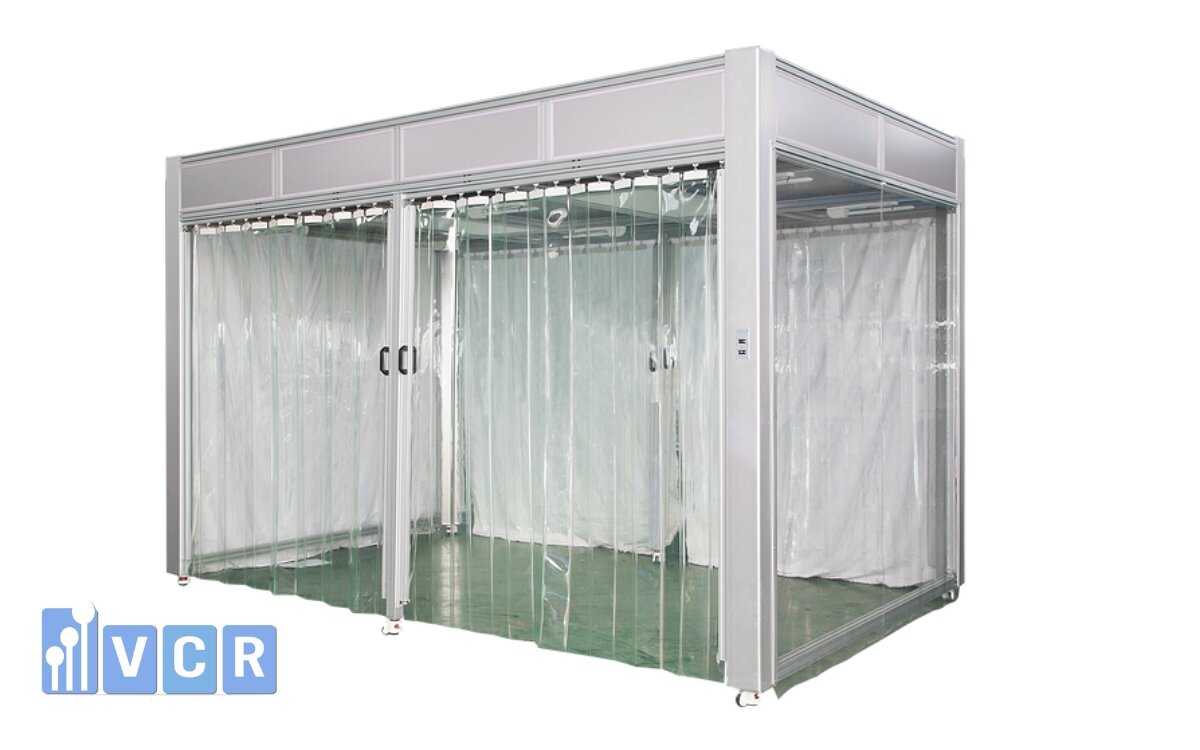
Why Do Electronics Manufacturers Need Clean Booths?
In the electronics industry—especially in SMT assembly, BGA inspection, and packaging—dust and static contamination can lead to component failure or yield loss. A Clean Booth provides a cost-effective and modular solution to mitigate these risks:
- Effectively controls fine dust (PM0.3-PM10) in sensitive work areas
- Reduces the risk of electrostatic discharge (ESD) affecting microcircuits
- Protects components during assembly, inspection, and handling
- Easy to deploy in specific production zones without building a full-scale cleanroom
- Optimizes costs for small-to-medium factories or expanding production lines
A Clean Booth is more than just an air filtration system—it's a frontline defense for maintaining product quality in modern electronics manufacturing environments.
2. Types & Pricing of Clean Booths for Electronics Factories (2025 Update)
Clean Booths are widely used across electronics factories to create localized clean zones that prevent dust and static contamination—especially in SMT lines, inspection stations, and component storage areas.
Below is an overview of the most popular Clean Booth types, categorized by ISO cleanliness class, along with updated 2025 pricing:
|
Model |
ISO Clean Class |
Typical Application |
Key Features |
Estimated Price (VND) |
|
Class 100 |
ISO Class 5 |
Micro-assembly, wafer handling |
Fully sealed, stainless steel frame, control panel |
from 125,000,000 |
|
Class 1000 |
ISO Class 6 |
Quality inspection, final packaging |
Soft PVC curtains, sturdy aluminum frame |
from 85,000,000 |
|
Class 10000 |
ISO Class 7 |
Light handling, pre-SMT buffer zones |
Modular structure, sliding doors, easy installation |
from 69,000,000 |
|
Class 100000 |
ISO Class 8 |
Component storage, auxiliary clean zones |
Open-frame design, cost-efficient, fast deployment |
from 55,000,000 |
Notes:
- All prices include FFU units, HEPA filters, structural frame (aluminum or stainless steel), and LED lighting.
- Prices exclude shipping, installation, and custom layout design.
- Options available for custom dimensions, FFU quantity, and material selection (304 stainless steel or aluminum frame).
3. Key Factors That Affect Clean Booth Pricing
The cost of a Clean Booth is not fixed—it depends on several technical and project-specific factors. Below are the five most important considerations when budgeting for your clean zone:
1. Custom Dimensions
- The size and height of the Clean Booth directly affect the number of FFUs, frame materials, and installation time.
- Projects with unique layouts (L-shapes, elongated designs, additional doors) may incur additional costs for materials and custom assembly.
2. Type of FFU Used
- HEPA H13 FFUs are the standard for electronics manufacturing environments.
- For ultra-clean requirements (ISO 5-6), ULPA H14 filters can be used, which may increase the cost by 20-30%.
- Airflow capacity, noise level, and FFU brand (e.g., Panasonic, EBM, OEM) also influence pricing.
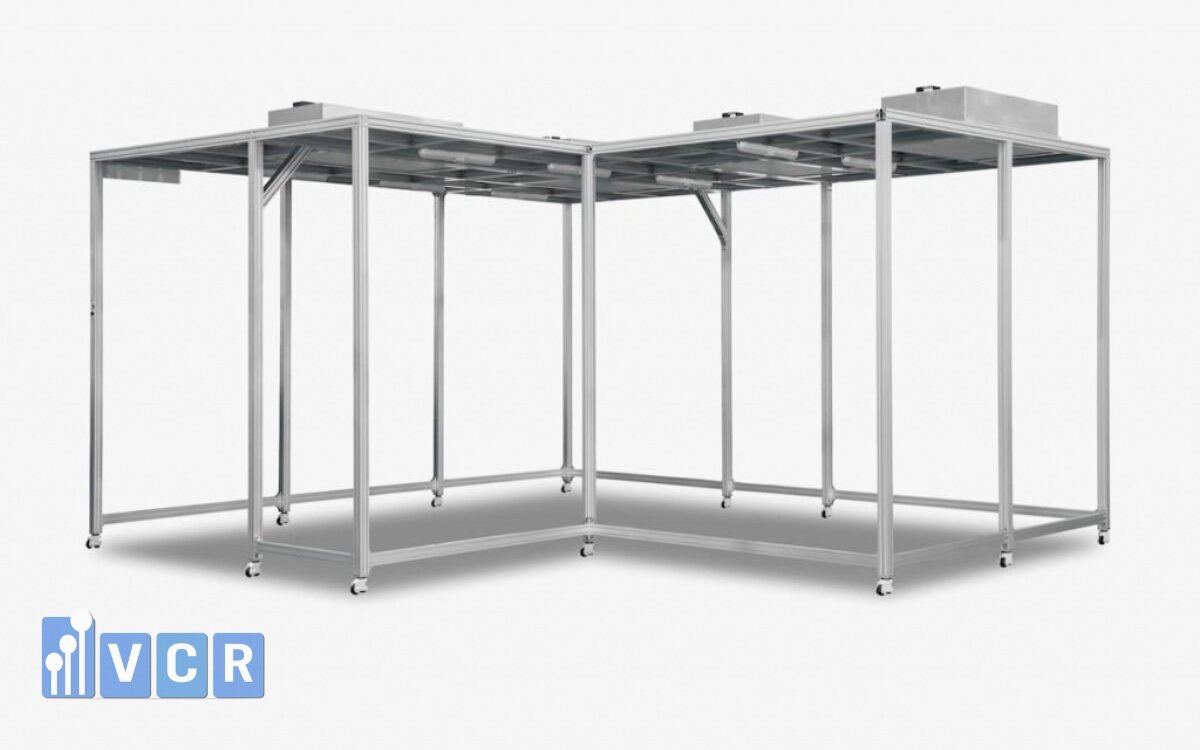
3. Frame Material Options
- 304 Stainless Steel: Durable, corrosion-resistant, easy to clean - highest cost.
- Aluminum Profiles: Lightweight, modular, easy to install - most commonly used.
- Powder-Coated Steel: Cost-effective option, suitable for auxiliary or storage areas.
4. Order Quantity
- Retail orders (1-2 units) follow listed pricing with minimal discount.
- Bulk orders (5-10 units) or full project packages receive competitive pricing, including free shipping and installation support from VCR.
5. Cleanroom Standards & Certification
- Pricing varies depending on the target cleanliness level: ISO Class 5, 6, 7, or 8.
- Projects that require third-party validation (particle count testing, pressure differential measurement, etc.) will incur additional costs for test equipment and certified personnel.
4. Why Choose Clean Booths from VCR?
With over a decade of experience in Vietnam’s cleanroom industry, VCR (Vietnam Cleanroom Equipment) not only supplies high-quality Clean Booths, but also offers custom engineering and layout design services tailored to the specific needs of electronics factories.
Here’s why hundreds of electronics manufacturers trust VCR:
Custom Layouts Based on Your Production Lines
- VCR conducts on-site surveys and proposes optimized Clean Booth layouts aligned with your factory’s space and cleanliness requirements.
- Support includes 2D/3D layout drawings and airflow simulation for maximum efficiency.
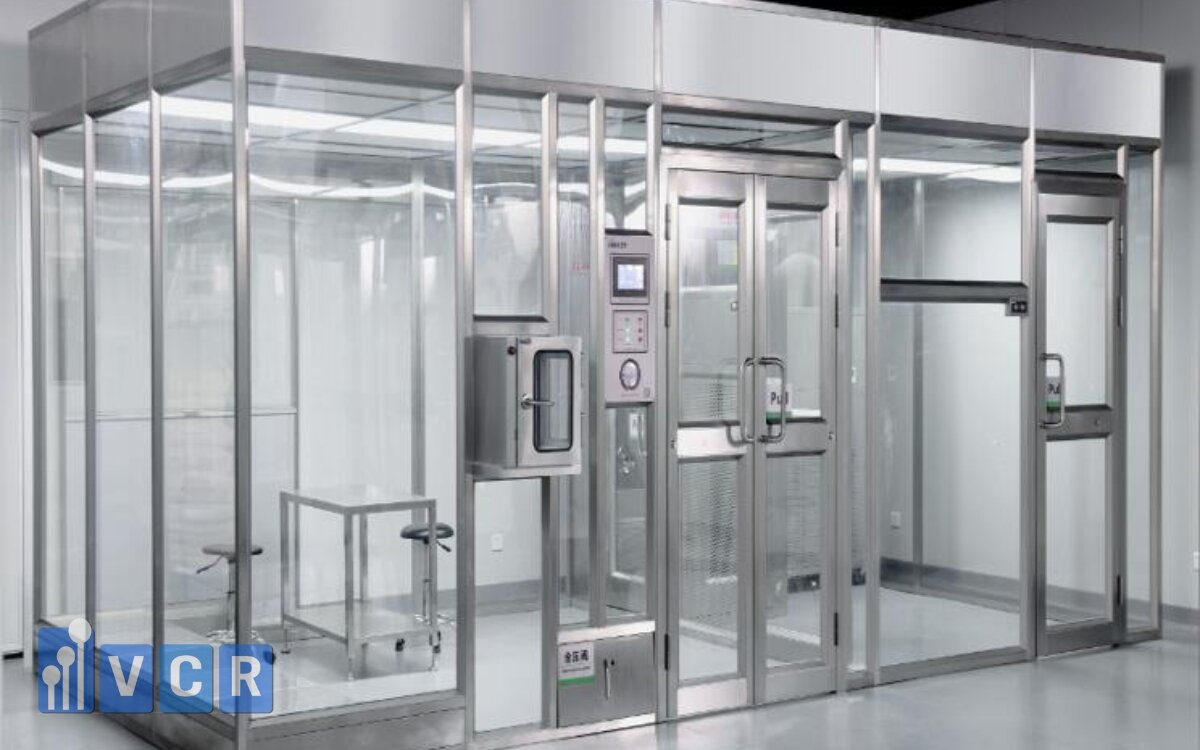
Flexible, Scalable Construction
- VCR Clean Booths use modular aluminum or stainless-steel frames, allowing for easy assembly and reconfiguration.
- The FFU system can be scaled up or down without needing to redesign the entire structure.
Certified Technical Standards
- All units use genuine HEPA H13 or ULPA H14 filters, tested before shipment.
- Clean Booths are built to meet ISO Class 5 through Class 8 standards.
- Optional features include ESD control, UV sterilization, pressure sensors, or ionizers upon request.
End-to-End Service with Full Warranty
- VCR provides a comprehensive solution: design → production → delivery → installation → cleanroom testing → staff training.
- All Clean Booths come with a 12-month warranty and optional periodic maintenance packages.
5. FAQ - Common Questions About Clean Booths in Electronics Manufacturing
Is ISO certification required for a Clean Booth?
→ It depends on the project requirements. Some clients only need internal cleanliness standards, but electronics manufacturers serving international markets often require compliance with ISO 14644.
VCR can assist with particle count testing, pressure differential measurement, and ISO certification upon request.
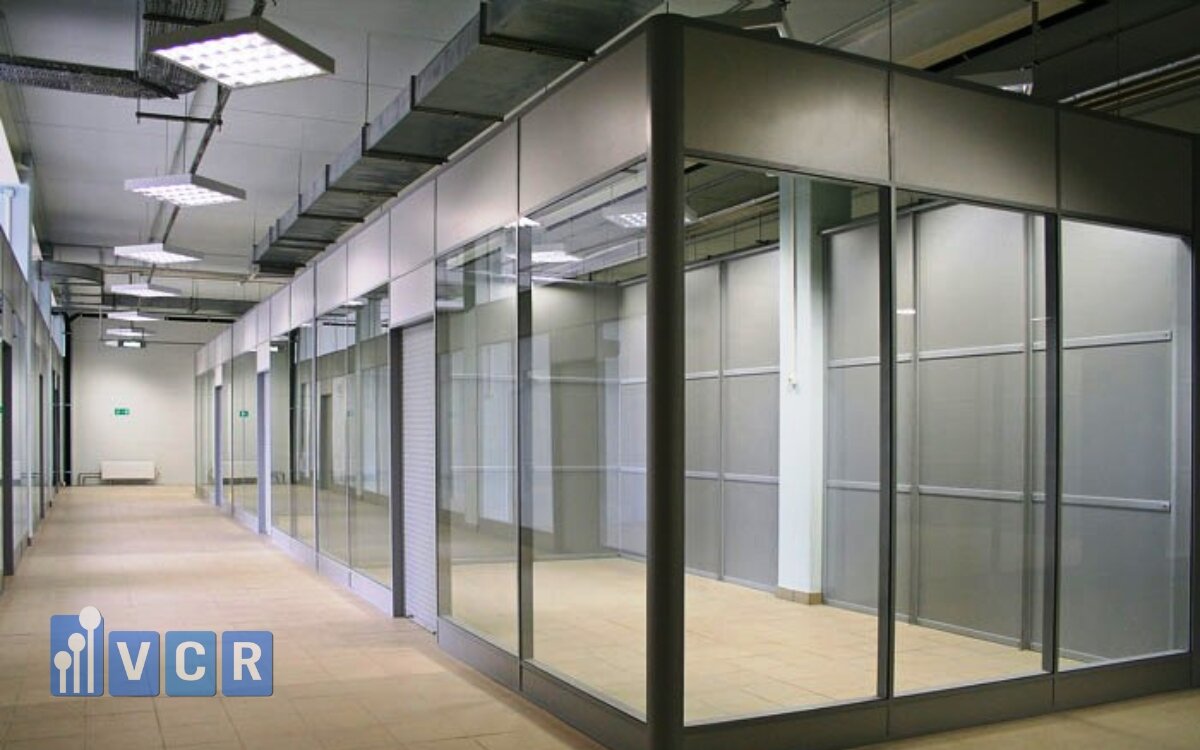
How many FFUs do I need for a 6-meter SMT line?
→ On average, 1 FFU is required for every 1-1.5 meters of linear length to maintain stable airflow and the desired cleanliness level.
VCR will calculate the exact number of FFUs needed based on the booth’s height, work zone layout, and cleanliness class per production step.
Can Clean Booth filters be replaced periodically?
→ Yes. The FFU system in VCR’s Clean Booths is designed for easy replacement of HEPA and pre-filters.
Recommended replacement schedule:
- Pre-filters: Every 3-6 months
- HEPA filters: Every 12-18 months or based on pressure drop readings
VCR provides genuine replacement filters and on-site maintenance services as needed.
6. Need an Accurate Clean Booth Quote for Your Electronics Facility?
Are you looking for a clean environment solution for your SMT lines, BGA inspection area, or component storage zones?
Need a custom-sized Clean Booth that complies with ISO 14644 standards?
Stop guessing—let VCR provide you with a tailored consultation based on your actual production layout.
Get in touch with VCR today:
Hotline: 090.123.9008
Email: [email protected]
Website: https://cleanbooth.vn/
Diep VCR


